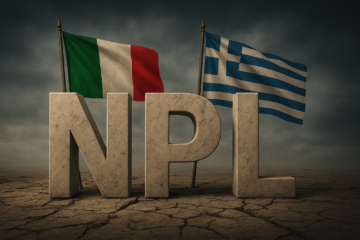ION Group – privately owned
Cerved (CERV) – market cap as of 26th March 2021: €1.86bn
Introduction
ION Group has made a takeover offer worth €1.9bn ($2.2bn) for Milan-based Cerved, just days after the privately-owned fintech company snapped up Italian banking software provider Cedacri.
Dublin-based ION, led by Italian businessman Andrea Pignataro, has teamed up with Singapore’s sovereign wealth fund GIC for the Cerved bid, which sent shares in the Italian credit analysis and management group up nearly 20% in line with the offer price. ION made a full offer of €9.50 per share valuing Cerved at €2.4bn euros ($2.9bn). The offer represents a premium of about 36% over Cerved’s March 5th closing share price.
Cerved has long been seen as a takeover target. In 2019, U.S. private equity firm Advent sought to take the company private in a €1.8bn bid that was dropped when reports of the approach boosted Cerved’s share price.
About ION Capital
The ION Group (“ION”) is a privately held group of companies headquartered in the Republic of Ireland, with a number of affiliated entities registered in the UK. ION provides mission-critical trading and workflow automation software solutions to corporates, central banks and financial institutions. Dublin-based ION, led by Italian businessman Andrea Pignataro, is an acquisitive financial data group that owns businesses like Dealogic, MergerMarket’s owner Acuris and trading software maker Fidessa. ION is one of the largest financial software firms in the world with technology that covers everything from trade execution through the settlement process with clearing member firms on derivatives, forex, OTC and fixed income markets.
Under Pignataro, ION has grown through acquisitions, culminating in the recent €1.5bn Cedacri deal. Prior to that, ION in 2019 had taken a majority stake in financial news company Acuris for £1.3bn($2.5bn) and bought trading software firm Fidessa for £1.5bn in 2018.
About Cerved
Established in 2005, Cerved Credit Management Group is an independent organisation that provides a complete array of products and services for assessing and managing credit portfolios, on both the primary and secondary market. Cerved runs both a credit data analysis and a loan collection business, which it has been trying to sell after losing a long-term contract with bank Monte dei Paschi and failing to expand the division’s activity into Greece. Cerved helps more than 30,000 corporates, public authorities and financial institutions to manage opportunities and risks in their commercial relationships. It supports clients in planning and implementing commercial and marketing strategies. Because of the pandemic, activity is expected to pick up due to the accumulation of bad debt this year. Furthermore, Cerved is also the leading independent player in Italy in the assessment and management of credit exposures, both performing and non-performing, and remarketing of goods related to these exposures. Cerved’s credit management division is the third-largest collector of non-performing debt in Italy. However, revenues of the Credit Management Business Unit went from €126m in 2019 to €111m in 2020, down 12%. On 30 January, 2020, Cerved bought through a subsidiary a 50.1% stake in Quaestio Cerved Credit Management for €43m. As a result of this acquisition, CCMG became the sole shareholder of QCCM, a company already consolidated on a line-by-line basis in the Cerved Group.
Industry overview
Since ION’s M&A strategy is largely geared towards accumulating as much financial information as possible and combining it in one company, it is difficult to pinpoint which exact industry it is a part of. Its financial data business is best comparable to Bloomberg, although not as big. ION provides infrastructure required for trading shares, derivatives, or debt. More precisely, the group is responsible for supplying data and trade processing underlying some of the trading value chain. In certain markets, ION rivals with large competitors such as FIS, Bloomberg or Intercontinental Exchange, however, it does not share the entirety of its markets with any of them. Frequently, it competes with smaller, highly specialised software companies.
Cerved, as already mentioned, is mainly active in two complementary markets, namely in credit management and credit data analysis. In Italy, especially the former industry has seen impressive growth and increased M&A activity in the last decade, largely due to three factors: first, because institutions in this sector identified the development of comprehensive credit collection platforms, either via internal growth or via acquisition, as crucial to increase efficiency. Second, several banks started disposing debt portfolios to investors, benefitting both captive and independent servicing players. Lastly, the industry has seen a dramatic increase in strategic carve outs of NPL (non-performing-loans) banking platforms by specialised firms.
Other trends include consolidation in the high-end of the sector, with the general aim of creating large scale champions. As in many other European countries, the market share of the top 5 has been increasing, particularly in the last few years. Additionally, there is incentive to leverage M&A options to expand into other, unripe countries in order to benefit from a lack of competition.
The pandemic caused an abrupt increase in NPLs. However, due to public support and state guarantees, the access to these debt portfolios has been delayed. A PwC report on this subject expects them to become available within the next 24 months, where inflows to the Italian Market are expected to range between €50-70bn.
The other part of Cerved’s business, credit data analysis, has evolved from simply providing credit information to supplying risk intelligence. This means that it now gives a more comprehensive assessment of the general risks its customers face when interacting with other businesses, such as fraud or compliance risks. Furthermore, it has integrated additional benchmarks into its analysis, such as sustainability ratings. In this regard, Cerved is representative of the industry as a whole that thanks to digital and platform-based solutions has become more efficient.
Deal structure
The $2.2bn takeover offer was proposed by a group consisting of ION and GIC, Singapore’s sovereign wealth fund. In the prospective deal, Cerved’s shares would be purchased at €9.50, corresponding to a 43% increase when compared to Cerved’s average share price last year and a 35% increase when compared to the price at the beginning of March. ION’s offer also encompasses funding from FSI, a state-backed fund from Italy that has agreed to underwrite the deal up to €150 million. The fund’s involvement significantly reduces the risk of the Italian government stopping the acquisition from happening.
The deal should be completed through the investment vehicle “Castor”, which is controlled by FermION Investment group. Of this group ION owns 85.75%, GIC 10%, and institutional investors the rest. Additionally, financing from FSI can be converted into an indirect stake in Castor. For the deal to be successful, a minimum of 90% of shareholders need to accept and should that happen, Cerved will delist from the Milan Stock Exchange..
Deal rationale
Cerved’s market positioning could be one of the main motivations for ION’s bid. In fact, over the last 40 years, Cerved has undertaken many strategic mergers and acquisitions, incorporating numerous institutions in their sector such as Centrale dei Bilanci, Lince, Databank, Finservice, Honyvem, Consit and Recus but also outside their industry, such as MBS Consulting. This strategy has turned Cerved into the Italian market leader in big data management and in business information.
The vast amount of financial data that Cerved has accumulated also goes a long way in explaining ION’s interest in the company. Cerved has a great amount of data on a substantial part of Italy’s businesses, which could benefit ION’s financial information provision business.
Indeed, the Cerved deal generally represents a good strategic fit with ION’s other portfolio companies and recent acquisitions. It comes right after ION’s €1.5bn acquisition of Cedacri, an IT services provider for financial institutions, which is becoming one of the top european FinTech players. ION also recently acquired software house List, strengthening its grip of automation technology. Taken together, these acquisitions will help ION strengthen its three services (ION Markets, ION Treasury and ION commodities) in IT services for financial institutions.
ION actively manages or restructures the companies it adds to its portfolio, and Cerved represents a good fit for this type of M&A strategy, since it offers flexibility. ION’s future intentions with Cerved are similar to the ones it has for Cedacri: to invest in the company’s growth, but also explore M&A options and restructuring opportunities. ION is showing intentions of focusing on business information, their core business. One route ION could to take is to sell Cerved’s NPL (non performing loans) division to investment managers that have already demonstrated interest, such as Apollo, Centerbridge or Prelios.
Market reaction
On March 9th, after the takeover bid announcement, the share price of Cerved had risen by 19.9% closing at €9.61, aligning with the offer price of €9.50 made on March 5th.
Financial advisers
Banca Imi, Credit Suisse and Goldman Sachs advised the buyer while Unicredit advised Cerved.



0 Comments